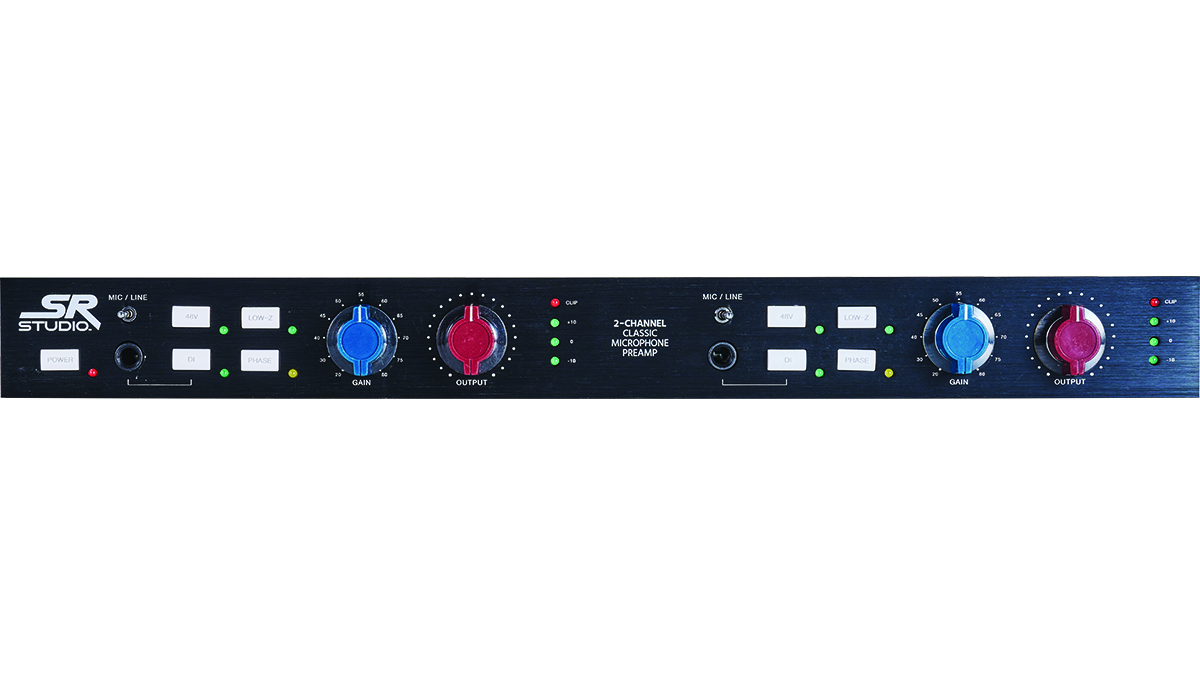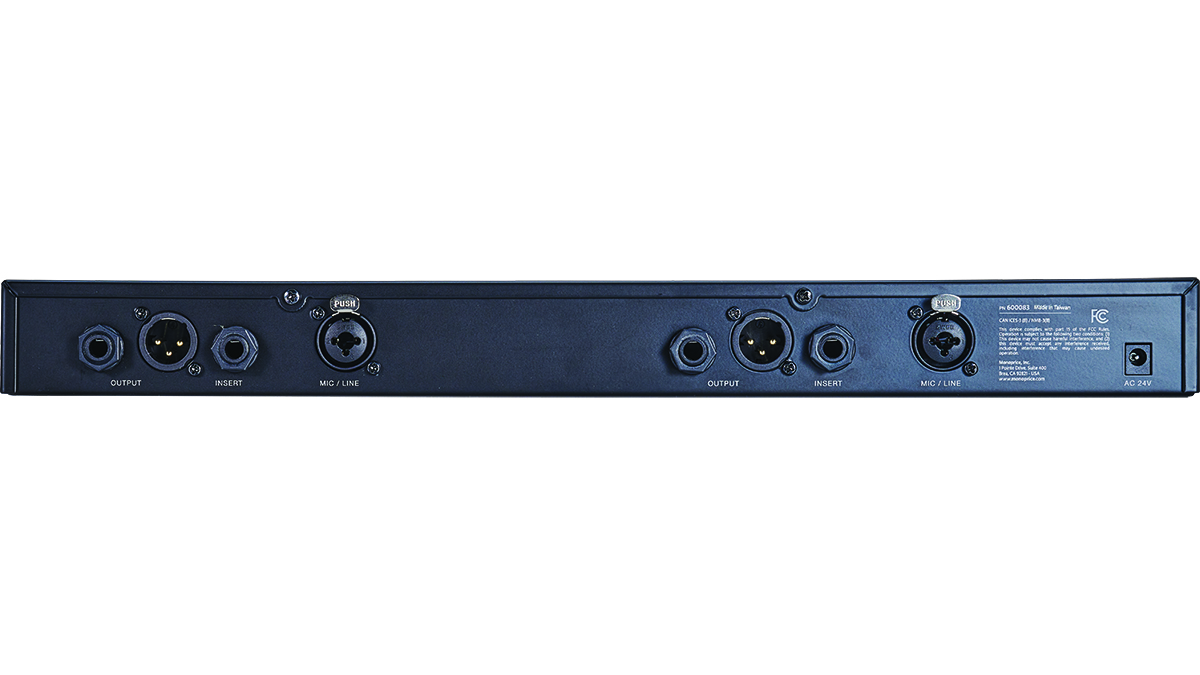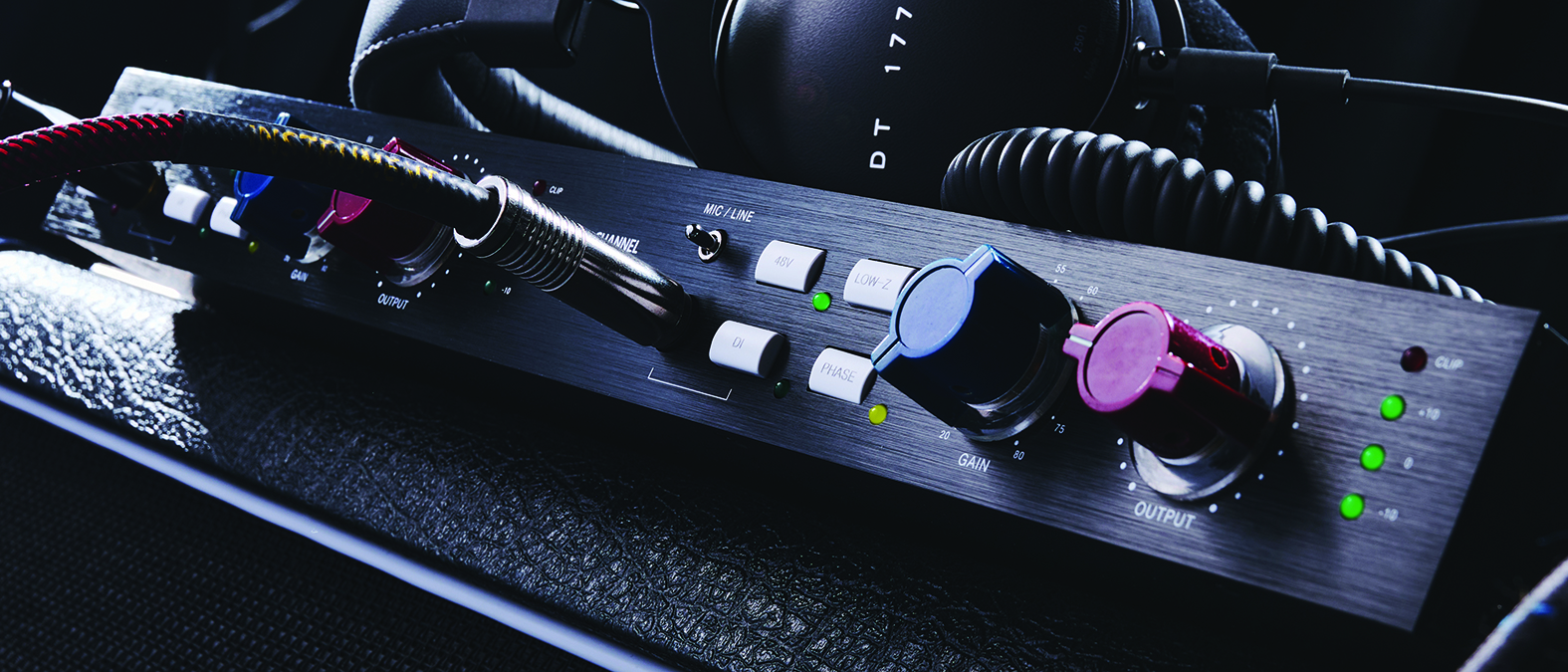MusicRadar Verdict
A great piece of hardware for any studio, this low-budget pre-amp delivers shining audio on a range of instruments.
Pros
- +
Great sound quality.
- +
Two separate channels with direct input option and low impedance setting.
- +
Easy four LED level monitoring.
Cons
- -
No onboard filters or EQ.
- -
Heavy compared to the Neve 1073, at 4kg (Neve is 2.5kg).
MusicRadar's got your back
SR Studio 2-Channel Classic Mic Preamp: What is it?
If you’re looking for an affordable preamp, this new model from Monoprice’s Stage Right (SR) Studio range is a strong competitor. Monoprice released its first pro audio product in 2013, and this ‘1073-style’ microphone preamp is the company’s latest offering. At a retail price of $600, this product is around a third of the price of some competitors. The original Neve 1073 preamp is a much-lauded piece of gear and, as we’ll see, Monoprice has done a great job of recreating its design in an affordable package.
Two input channels are housed within the case; each with its own transformer-balanced preamp (one transformer at each input and output of signal). Each channel has a frequency response of 20Hz ~ 20kHz ±0.5dB and a signal-to-noise ratio of less than 90dB. Circuits have discrete components (individual resistors, capacitors, etc) rather than chips with a number of these in. In all, these are impressive specs allowing the unit to handle a range of signal levels.

On the rear, each channel has a 1/4-inch TRS input and output as well as an XLR/TRS input/output (selected via a switch). Each channel also has a ‘direct input’ XLR/TRS on the front, which can be used instead of the rear connections. The front also has a 48V phantom power button for each input.

SR Studio 2-Channel Classic Mic Preamp: Performance and verdict
This range of inputs makes the unit handy for both musical and broadcast/recording duties. The direct input on the front can easily be used to take in any mono channel, adding to the unit’s flexibility.
The first gain dial allows a sound range of 20-80dB to be produced, while the output level allows for further final stage amplification. The phase button inverts the polarity of the signal coming into the unit on output; useful to prevent phase cancellation when using multiple mics. The ‘insert’ input on the back is used to connect other units or modules (such as a compressor or EQ) into the chain, after the preamp.
A low impedance setting, ‘low-z,’ sets the amp up to receive signals of less than 600 ohms when engaged and more than 600 ohms when not engaged, thus working well for a range of mics. Output level is monitored with four LEDs.
This preamp is currently only available in the US, so import models will require the use of the correct power adapters. Monoprice states that European/UK models will be available soon though.
Want all the hottest music and gear news, reviews, deals, features and more, direct to your inbox? Sign up here.
This is an impressive preamp, designed for those recording on a range of mics, who want the very best ‘1073-style’ quality delivered on a vocal or instrument. It’s a strong contender for a high-end studio choice at a reasonable price.
Unlike an original Neve console, there are no EQs, but the insert point allows for this to be overcome with additional hardware.
MusicRadar verdict: A great piece of hardware for any studio, this low-budget preamp delivers shining audio on a range of instruments.
SR Studio 2-Channel Classic Mic Preamp: The web says
"Monoprice is onto a winner with the well-built and budget-friendly SR Studio mic preamp. It has heaps of vintage analogue character and a real rock ‘n’ roll heart."
MusicTech
SR Studio 2-Channel Classic Mic Preamp: Hands-on demos
Obscure Mics

SR Studio 2-Channel Classic Mic Preamp: Specifications
- KEY FEATURES: I/O: Front panel: 2x 1/4” unbalanced TRS female. Rear panel: 2x balanced XLR/TRS female, 2x balanced 1/4” TRS female inputs, 2x balanced XLR male, 2x 1/4” balanced TRS female poutputs.
- CONTACT: Monoprice

Singer, songwriter, instrumentalist, composer, writer. One half of Interstellar Duo.
Reviews and opinions on gear; where acoustic and electronic music intersect.
